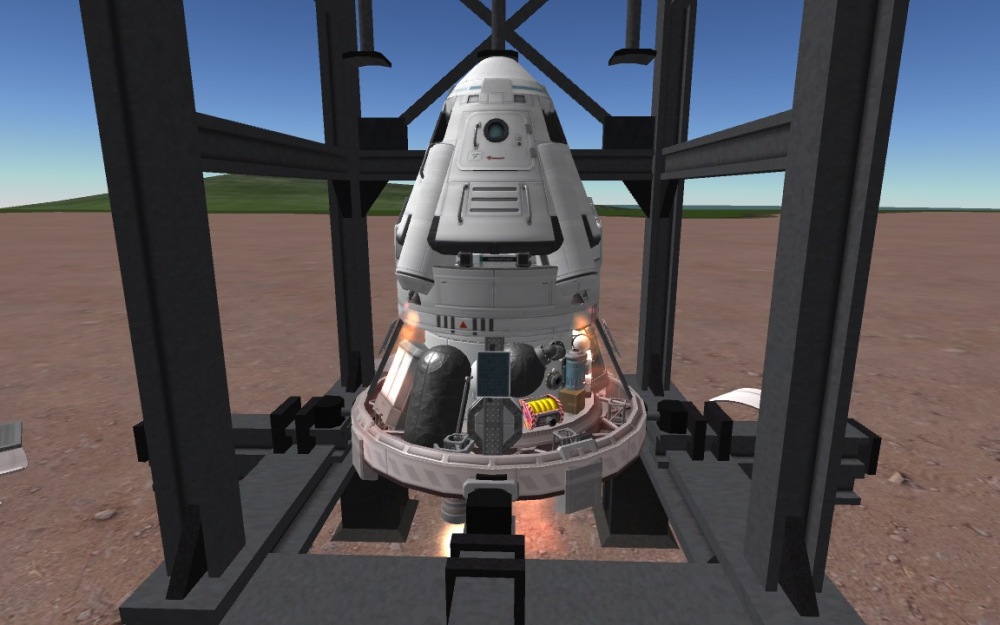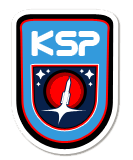
L003B Falcon 01 was deployed to the island facilities for final design tests. Again, Jeb’s spaceship company had outdone itself in creating a partially reusable lander that would be capable of taking 3 kerbals to the surface of the Mun and back to Kerbin. After this test, they decided to add two more engines to the first stage and rating it “Duna” capable.
In fact, it was so powerful. It performed it’s own abort test a couple of weeks later at the Woomerang launch facilities. The odd-looking craft carried 25 days of supply, several backup power generators, 2 onboard computers, a rover, deployable science suite, and base instruments. The extending landing legs should protect the engines on the second stage and enable reuse.
Falcon 03 flew on an old ballistic missile of unknown design. This solid rocket pushed the second stage of the craft almost into a 70×80 km orbit. Using its own engines it circularised, performed a system test and landed safely.
Falcon 04 tested the integration with the Super Thor and the new launch towers. It struggled. After 10 km the craft suffered from the drag that the large airframe introduced and the small wings derived from Thor struggled to keep up.
It made orbit but did not have enough fuel to get to the Mun so the test was aborted. Again the craft landed safely, but engineers worried about the integrated system. Would the Super Thor be in need of replacement before it flew? would the Falcon design be abolished in favor of more sleek approaches?
Falcon 05 launched a few weeks later on a Super Thor with larger fins. This time stability was not an issue and the stack was placed in orbit with 1200 m/s left in the third stage.
The whole trip to the Mun was like any other. The craft boosted into a low orbit, aligned with the target and due to enhanced reaction wheels and the powerful first stage, it managed to land within 20 meters of the Delver.
Rover deployment also went as expected and after a brief cruise, Rover 01 found the lost Spirit probe. The new Rover could also function as a beacon for further missions.
Takeoff was successful and it was decided to leave the first stage rather than crashing it for science. The additional supplies could come in handy in case of an emergency. The new spacecraft performed well in deep space and journeyed home.
It survived reentry but not all engines survived the water landing. This was mainly because they had run out of fuel and could not slow down from 10 m/s to something that the engines could survive. All in all a great run, KSC still had some doubts on the flight profile and asked the Kerbia Design Bureau to look into larger diameter rockets. For now, Falcon was cleared for flight.














































